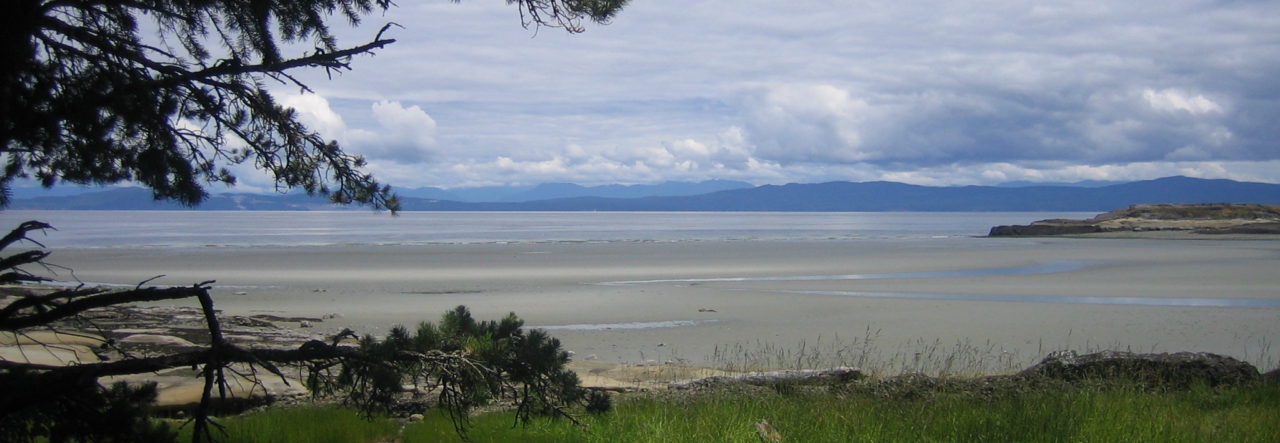The other night our gaming group continued its heroics in Middle Earth. We played “Those Who Tarry No Longer,” one of the Wilderland Adventures published by Cubicle 7.
Continue reading “Adventures in Middle Earth Play Report: Those Who Tarry…”Category: Play Report
Adventures in Middle Earth Play Report: Kinstrife and Dark Tidings
We recently played the next adventure in Cubicle 7’s Wilderland Adventures, Kin Strife and Dark Tidings. I used details from the Rhovanion Region Guide and The Mirkwood Campaign and from my own notes as I’ve some changes to the plot line. The Mirkwood Campaign spans thirty odd years, and with that and my own plotline, I have been dropping hints and giving exposure to things not in the original adventure. I think that doing so increases verisimilitude and really helps to draw the players in more.
Continue reading “Adventures in Middle Earth Play Report: Kinstrife and Dark Tidings”Adventures in Middle Earth: Play Report
So after some of the yuletide festivities died down, I ran a session of Cubicle 7’s Adventures in Middle Earth, continuing the campaign from earlier. We had a larger group this time, 6 players, 3 of whom were new to the system. I ran the published adventure “Of Leaves and Stewed Hobbit,” the second of the seven Wilderland Adventures and used my recently created terrain piece (build described here.)
In order to keep the play progressing, I laid out some ground rules:
- No cellphones at the table;
- 15 seconds per person during combat;
- Initiative rolled prior to game start and remains the same throughout;
- Name cards for each person, with character name, AC, maximum hit points, perception score and initiative;
- 1 at a time (I am outnumbered rule); and
- Crit snacks rule (our group has a tradition of having nice chocolates set aside that are only used for when a natural 20 or 1 is rolled. Sometimes it’s a consolation prize, other times it’s celebration).
The party was:
Arador, a Dunedain Warden;
Caranthiel, a Wood-Elf scholar;
Eothygn, a warrior of Rohan;
Quentin T. Tarrow-Took, a Hobbit Wanderer;
Skovrok, a Dwarven Warrior; and
Tharin, a Dwarven Treasure-Hunter.
***SPOILER ALERT*** If you’re going to play this adventure, there will be spoilers.
We started as the party entered the Most Easterly Inn, a cozy place set up by some Hobbits. The party met with the new characters who had been sent by Radagast to check out the Grey Mountains for signs of new Goblin activity. They hadn’t found much, but had killed a messenger of the enemy and recovered a missive. I had printed it to be read in the mirror, and then had put the important bits as a note on the text in a simple pigpen cipher. This was to keep players interested if there were slow bits, as well as to advance the overarching campaign plotline I’ve created.
As the party settled into the well-appointed inn they were approached by the rather talkative owner, Dodinas (Dody) Brandybuck. Dody had opened the inn with his wife, Agatha, and his brother, Didy. Beorn had offered his protection as a favour to one Bilbo Baggins, who was a principal investor. Being a safe spot, and run by hobbits (who know much of comforts) the inn was doing very well. Didy had gone back to the Shire earlier to gather some more critical supplies from the civilized lands west of Bree. The thing was, he was overdue by a few weeks. The party volunteered to help to search as far as High Pass, and so impressed the innkeeper that he offered them a large sum of silver and also a letter of introduction from Bilbo Baggins to ease any meetings with the luminaries this side of the Misty Mountains.
After a good night’s rest, the party set out down the good road towards Old Ford.
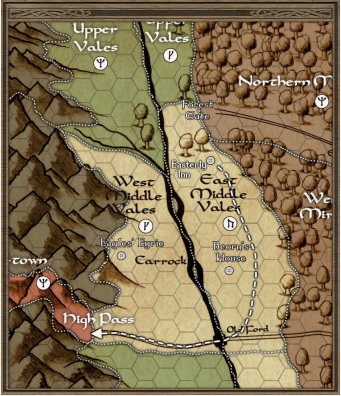
The journey went well, with a good departure roll. The first journey event could’ve gone poorly, with a roll of 12 (which is either very good or very bad). In this case, the party crossed paths with Saruman. Not all saw him immediately, as Quentin was waxing poetic about his mount (a donkey named Inspiration) and his riding skills. Eothygn nearly fell of his steed of Rohan at this, and Arador was laughing into his mirror. Tharin alerted the group and all stopped and quieted respectfully. The wizard raised his hand in a silent blessing (a free skill re-roll) and disappeared into the Mirkwood. This is a good example of the magic in Adventures in Middle Earth, still fantastical but not Vancian or clearly defined as it is inaccessible to the players.
Three days south of the inn, the party came to Old Ford. A quick stop by Galivira’s homestead nearby for some stew and some news and then to the ford. A bit of the old D&D mentality came up, as the party didn’t want to pay the toll to cross. The party then remembered that this crossing was owned by Beorn, and wronging his people might not be wise. More discussion. As the discussion was going on, Caranthiel approached the crossing guards and talked to them, using the sigil of her master trait to smooth things over and lower the fee. Eothygn paid for it, not wanting an elf to pay for a noble from the Mark.
The sigil is a feature from Caranthiel’s background. The Adventures in Middle Earth ruleset has cultures, cultural virtues that are like feats but full of flavour. They are not stacking, and you don’t need to plan out your character carefully or risk being left with a “poor/broken build.” The classes are modified as well, and backgrounds are very important, with more impact on the non-combat aspects of the game than the vanilla 5e rules. I must say that I really like this ruleset and highly recommend roleplayers to check it out. Back to our heroes!
Two more days over rougher roads to the west. One the first day, they saw a group of elves singing on their way to the grey havens. All found it peaceful, except for Tharin the treasure hunter, who seemed to see the loss of beauty as a sign of the coming darkness and so sank slightly deeper into shadow himself. The next day found the party making camp in what is colloquially called “Elendil’s Camp.” The arrival roll for the journey was good, but the first night at the base of High Pass wasn’t quiet. A barrow wight emerged from some boggy ruin and made to carry off some of the party. Alerted by Skovrok, the party stood-to quickly. Tharin snuck off to the shadows, but the wight saw him, and used a spell of despair on him. As the shadows darkened around the treasure hunter, Tharin didn’t feel the despair that was intended. Instead, he smiled and slunk deeper into the darkness to get a better shot off.
Skovrok stood his ground and the wight closed him but was unable to get past the Dwarven warrior’s heavy armour. Quentin, seeing his companion in danger, bravely called out for none to fear! He drew back his bow, and proclaimed woe to those who stood against him. As he loosed, his donkey, Inspiration, awoke and nudged him. Quentin’s arrow shot into the fire and sent sparks up, nearly lighting Arador’s cloak ablaze. The party mostly kept at range, leaving Eothygn and Skovrok to engage directly while all looked warily at the hobbit.
Quentin drew another shaft and loudly proclaimed that his next shot… would hit Skovrok in the rear. Doing maximum damage. Enraged, the dwarf hit the wight amazingly hard. The hobbit stated that clearly his hit had inspired Skovrok, so he, Quentin T. Tarrow-Took was responsible for that great hit which had rent the ancient armour of the wight. A short time later the wight’s spirit fled and the party took stock. No one was injured but Skovrok, who looked ready to kill the hobbit as the little one sauntered up and reclaimed his arrow from the dwarf’s posterior.
The next morning, Eothygn, having recognized the armour that the wight wore as belonging to one of the Eothed, went looking for the body. He found it as the party packed up, and took a jeweled necklace and a piece of armour. Again, the difference from a normal RPG showed here. Eothygn recognized the danger of taking a wight’s treasure, and put the necklace in a small pouch with the armour so proper burial rites could be done for this ancestor of the Horse Lords.
Leaving Elendil’s camp, the party followed the road into High Pass and found a pack pony with an arrow in its flank. Calming the pony, the party carried on into the foothills. A shout alerted them to look up at a ruined tower. Some humans were in the ruins, and one loosed an arrow down at a group of goblins. Looking around, the party saw more goblins swarming in the hills. The rushed up to the tower to join the humans. As they did, a few arrows hit the archer on the walls. Others in the tower shouted “Igwar!” and rushed to aid him. The party ran faster, realizing they had found the missing group.
I had set up the scenario for this in an adjoining room, to keep the pace moving. So we simply picked up our dice and character sheets and carried on, before returning to our whiteboard and sweets at our usual set-up. I found that this really helped to keep the pace moving and I will use similar ideas in the future.

Well, almost the whole party ran up. Tharin climbed up and then hid in the bushes just below the walls. Eothygn hefted his spear and readied his mount. Quentin took to the highest point of the ruins to lob arrows down. Arador took to the walls by the rear of the fort, covering Tom of Bree, one of the three humans in the ruins. Igwar stood near Skovrok, his left arm hanging uselessly as he looked at the orc soldiers moving up. Caranthiel attempted to aid Igwar, but wasn’t able to do much. The last person in the ruins, Andy of Bree, bravely took to the walls overlooking the closest goblin archers.

Eothygn shouted a war cry and charged the nearest goblin archers. He figured that he would scare some of the goblins and give pause to any reinforcements. He rode down the first few goblins as volleys of arrows began to fall around the tower. As per the scenario, I rolled an attack against a single character, changing it up each turn. Quentin was hit by a few shafts but kept his perch and fired down on the charging orc soldiers. Skovrok’s short bow also was in action, and Andy also fired effectively. 2 of the orcs were dead before the others rushed the front of the fort. Caranthiel’s bow had helped, and she readied her spear, standing a little behind Skovrok’s armoured form.
Tharin had injured some of the orcs at the front, and moved out from the hill to hit the goblins charging the rear. He dropped several, and kept disappearing into the undergrowth leaving the goblins distracted.
At the rear of the fort Arador fired, directly into the tree to his front. That didn’t help. Another shaft hit one of the goblins charging up with a chieftain. Another miss. Arador growled as Andy of Bree dropped ANOTHER orc. He loosened his sword in his scabbard.
Eothygn, had killed or injured several of the archers and held off reinforcements. Sadly, he was a target. My dice, which had been incapable of rolling above 7 (on a d20), suddenly changed tune. Previously, the players had voted my dice as the MVP for the night, laughing. Now they got quiet. Eothygn was hit, hard. Then the wolves turned to him and his spear missed. The wolves didn’t. Winning free from the goblins, he raised his spear in salute to his companions and charged back in towards the milling goblins and wolves with only a few hit points remaining.
Skovrok dropped the last orc with Carathiel’s help, the front now secured. He then rushed to help Tom fend off the first of the goblins from the rear. The goblin attacks couldn’t get past the heavy shields. Caranthiel and Quentin (and Andy!) fired down to help Eothygn, cursing the brave rider for riding back into danger.
At the rear of the fort, Arador was done. His bow was failing to do much and he would not be outdone by some farmer from Bree! He drew his sword and jumped down into the fray, going straight at the orc chieftain. As he leapt he shouted out the family battle cry, his Numenorian blood ringing true. He struck the chieftain brutally, driving him back. The goblins ran in fear, as did the chieftain, not expecting this vicious attack from the rear. Another virtue here, royalty revealed. Arador and Skovrok ran down the hill in pursuit of the chieftain. At the last moment the orc chieftain turned, but was cut down by the Dunedain. The goblins fled, driven back on both sides of the fort, their biggest warriors and their chieftain downed.
Not all was well though. The wolves had downed Eothygn. The archers on the walls had taken down some of the wolves, but the last turned to feed on the Rider. Quentin would have none of that. He skidded down the walls and charged. Caranthiel fired to distract it, but the wolf saw the hobbit and flew at him, enraged. Quentin dropped his bow after putting a shaft into the beast. He drew his sword and as the wolf leapt at him, he ducked. His blade eviscerated the creature, which slid into the fort itself. The hobbit, blade held over his head, looked at the long red, line in the dirt. Igwar stared at the diminutive wanderer, who smiled and bowed before running to render aid to the fallen Eothygn.
Caranthiel helped to bind Eothygn’s wounds and the party pulled into the tower for the night to rest. Igwar told the party about leaving Bree late and being tracked by goblins in the pass. Then the goblins started to harass the caravan. Just before the party arrived Didy had been captured. The goblins had sung about food, and added in a bit about making the hobbit cook for them before they consumed him.
As soon as Eothygn was ready, the party left Igwar, Andy of Bree, and Tom to gather up any ponies. The heroes set off into the goblin caves. Deeper into the mountain they went, the dwarves leading the way, feeling the stone. Then, a snuffling sound in the darkness. A cave troll! The party hid as the troll shuffled past. They realized that their exit was now complicated. They pushed on to find two drunken goblin guards at the entrance to the goblin’s lair. The goblins fell quickly and quietly to several arrows. Quentin began to layer goblin armour on, hoping to open the option up of sneaking in. The next cavern though, held the prize. A hobbit, manacled, was cooking at a large fire, the smoke rising up through some cracks above in the darkness. Goblins could be heard nearby. Didy sighed with relief but said that his manacles were ancient and strong, and attached to the cave wall. Tharin used his knowledge of broken spells to free the hobbit and the party pondered their next actions. A quick and simple exit was decided.
Eothygn shouldered the goat roasting on the fire (being careful to put a large old cloak between his armour and the goat). The others dragged the dead goblin guards along too. At a side passage, the party placed the goodies for the troll before making some noise and withdrawing. Thàrin stared wistfully at the goat for almost too long, as the troll lurched into passage to feast. The party snuck behind it and to freedom. They met up with Igwar et al, and made their way back to the Most Easterly Inn, where we leave them, telling their story, collecting their reward and deciding on their winter plans before reuniting for some more adventures in the coming year.
Overall, it was a great session. Managing 6 players was doable, but meant a change in style. The ground rules worked, and everyone was engaged throughout. The ciphered text wasn’t even attempted, which was a good sign that the pacing was right. People really got into their characters, and there was a lot of in character banter all night. Arador’s heroic jump into melee was perfect, and the dice supported him after letting him down throughout the night. Skovrok got into melee quickly, but was also the most respectful of the strangers they met and was the solid backbone of the party. The quiet elf did what she needed to in advancing the goals of her people, and the Rider of the Mark was as stubborn and brave as one could imagine. Even the treasure hunter, Tharin, played his character true, embracing the darkness and living at the edge of morality. But by far, the most interesting was Quentin T. Tarrow-Took, whose dice rolls made him as clownish and yet seemingly talented (or lucky) as his player had intended, a mix of Sancho and Don Quixote all in one. tiny, brave hobbit. All had fun, and I think regardless of the campaign in progress next year, we’ll have a ritual goblin slayage every Christmas.
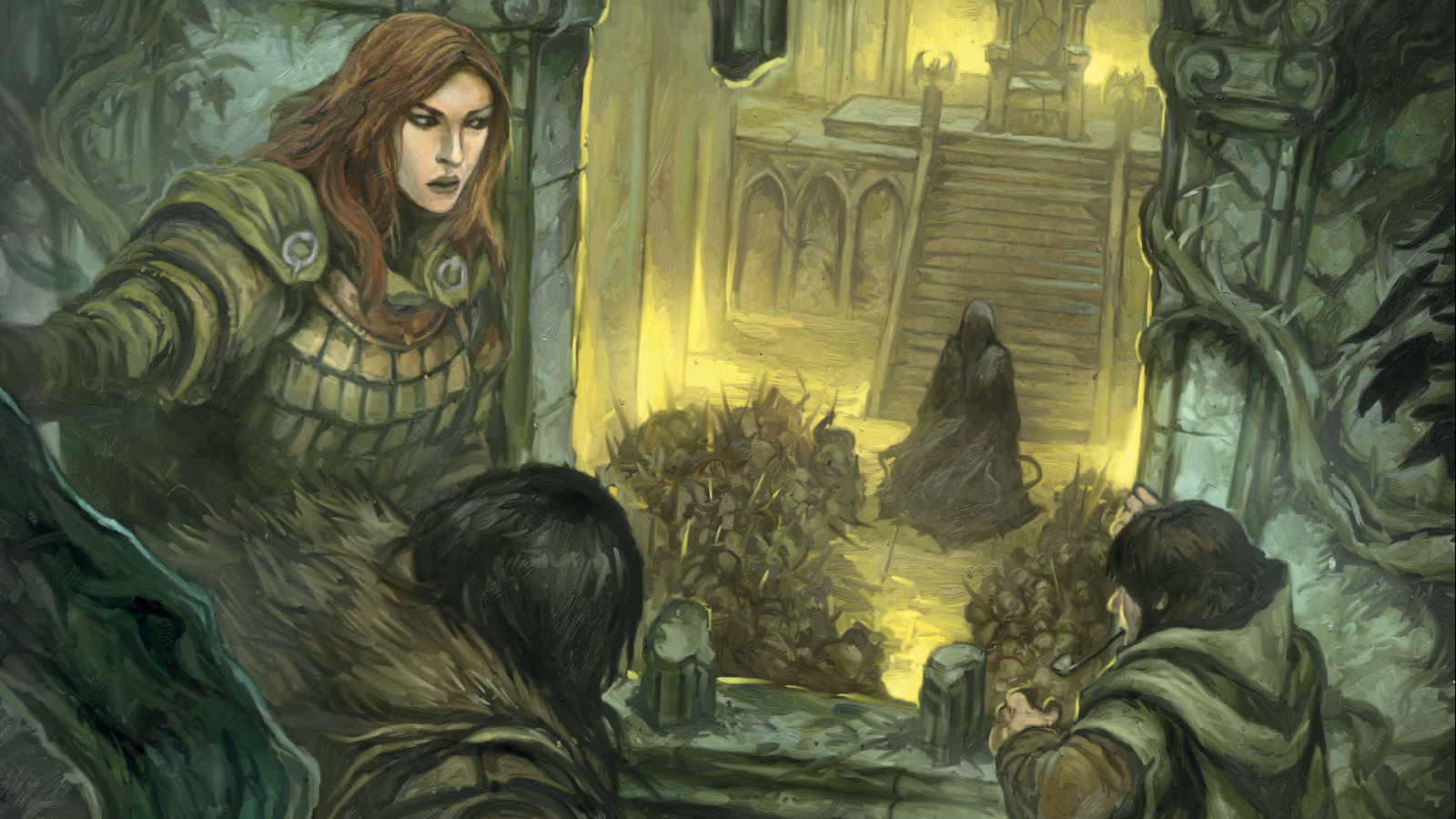
Adventures in Middle Earth: a play report and some first impressions
Disclaimer: the art in this post is copyright Cubicle 7. I do not own the pictures. I am putting up here to showcase the style they use in their games for this review.
One of my friends stepped up to GM for our RPG group and has been running the Iron Kingdoms RPG for a few months, with some Warmachine thrown in for larger battles (though Warmachine is more of a mass combat game rather than a wargame – more on that in a future post).
He’s been a bit busy, so I decided to dip my hand back into GMing again, and for the first time in many, many years, use a pre-generated setting. The setting I chose was Middle Earth, having been drawn in by Cubicle 7’s excellent game, The One Ring (TOR).
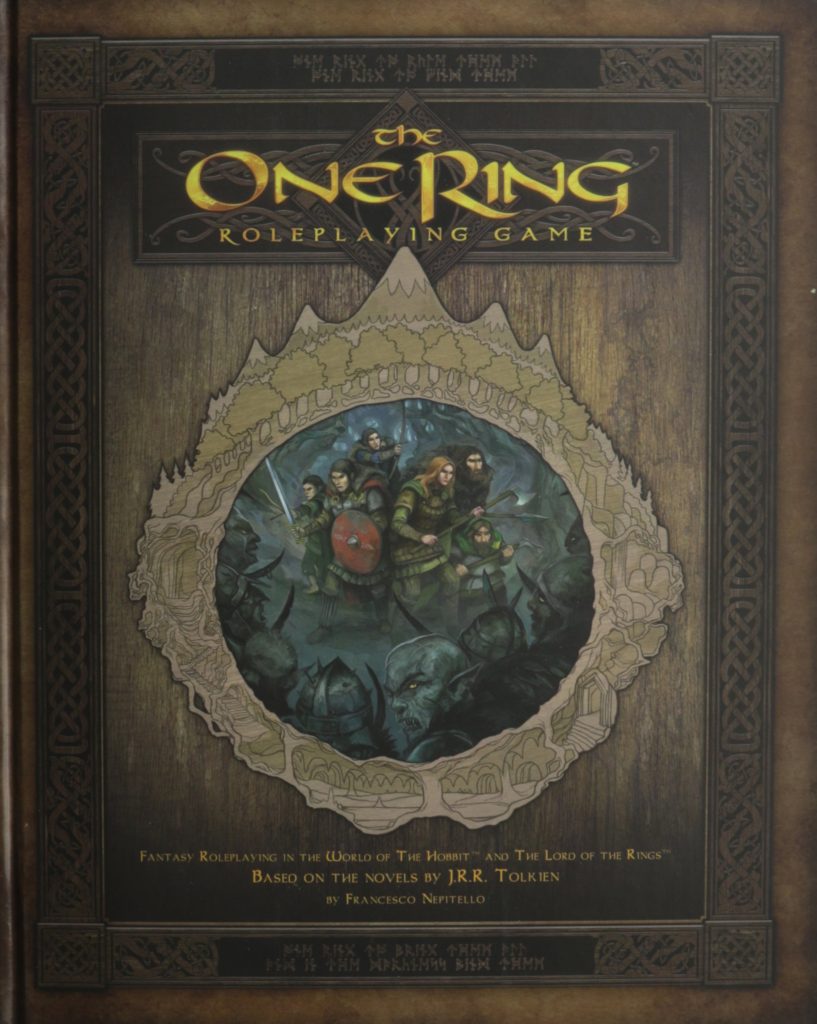
TOR uses one d12+d6s based on skill level for resolution, with a novel fatigue and injury system. It is properly heroic without being overpowered and really captures the feel of Middle Earth. For instance, you can remove your helm (and increase the risk of being wounded) to reduce your fatigue and be able to better strike your enemies as you grow more tired in battle. Combat is abstract, designed to be used without miniatures and is based on stances. The stances are about risk/reward, which is a nice change from the standard “you hit the orc, the orc hits you.” I have yet to play it, but it really strikes me as a great game for Middle Earth.
Despite my keen interest in TOR, I know that my group really likes gridded combat with as many tactical options as possible. I therefore took a look into Cubicle 7’s other Middle Earth offering: Adventures in Middle Earth (AiME) and am very glad that I did. AiME is a modification of the core 5e rules and is excellent. It is by far the best d20 based rule set I have seen. It is low magic but retains a strong sense of fantasy. It even improves on the already innovative journey and audience rules that are in TOR. Items get more powerful as characters do, and wealth is less important than in many other games, with social interactions and trust built over time being more important than silver or gold.
Compared to 5e, the cultures, classes, and even magical items have a much better feel and have very different roles across play. Where balance in 5e is all about everyone having an equal part to play in battle, AiME allows characters to shine throughout the game. That said, the combat rules are detailed and fun, and have all kinds of tactical options allowing for ruins, swamps, and forests to be used to best advantage. There is a corruption mechanic (shadow) that reflects the influence of Sauron and the despair a character can experience. In fact, almost all of the core 5e rules have been modified to be as close to Tolkien as possible for D&D. Characters choose a culture, a class, and background. Each has a real mechanical impact on the game. The cultures reflect the peoples around the Mirkwood, and each has its own virtues (which are like feats but far more interesting), cultural heirlooms and skill sets. The backgrounds feed into roleplaying with an inspiration mechanic that is modelled on the concept of hope in Tolkien’s written work. The resulting heroes are balanced and have mechanical reasons to invest in non-combat skills and be part of the greater fabric of Middle Earth. The game really tries to reduce the murder-hobo concept that dominates D&D and as we shall see, it does a good job.
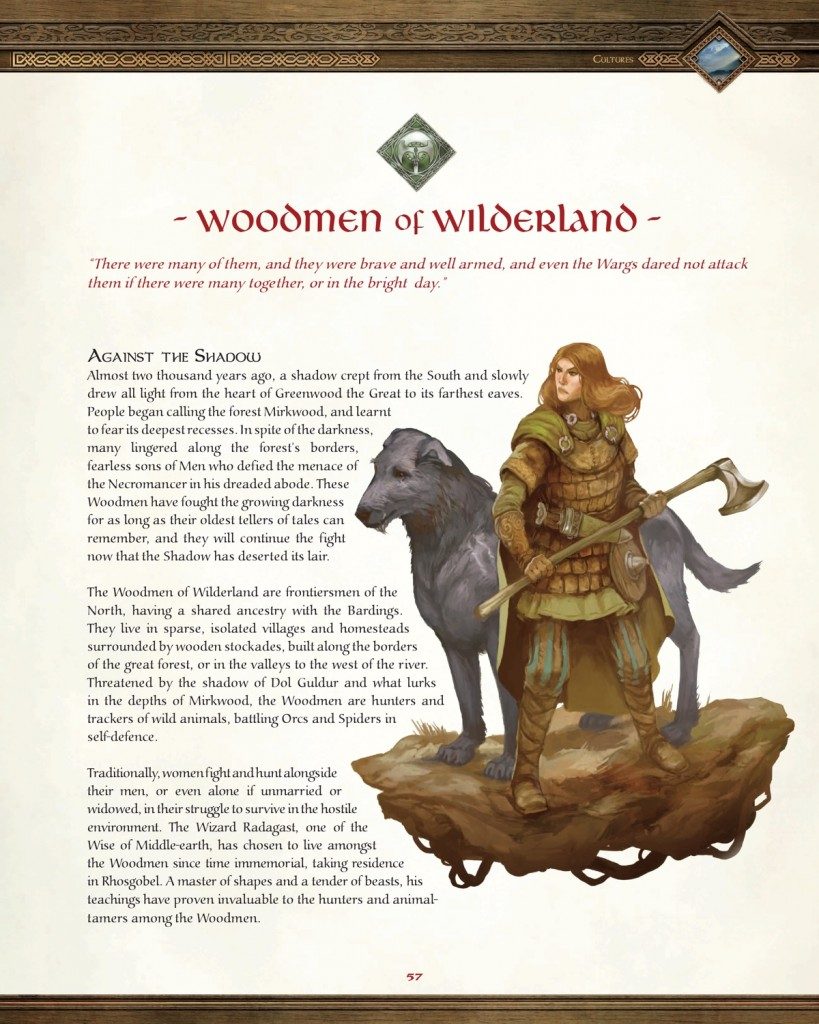
So, having a ruleset and the Wilderland Adventures I suggested running AiME about once a month when our Iron Kingdom GM was unavailable. Using an established setting and campaign would make it less onerous to run, and it was a familiar world to all. Additionally, AiME is designed to have breaks in adventuring, with a set Fellowship phase, where people live in the world for a bit. It is recommended that only 2 or so adventures happen a game year. This means that a once a month game will actually help accentuate that impression of time passing. It is also great as you can have a campaign span 30 years!
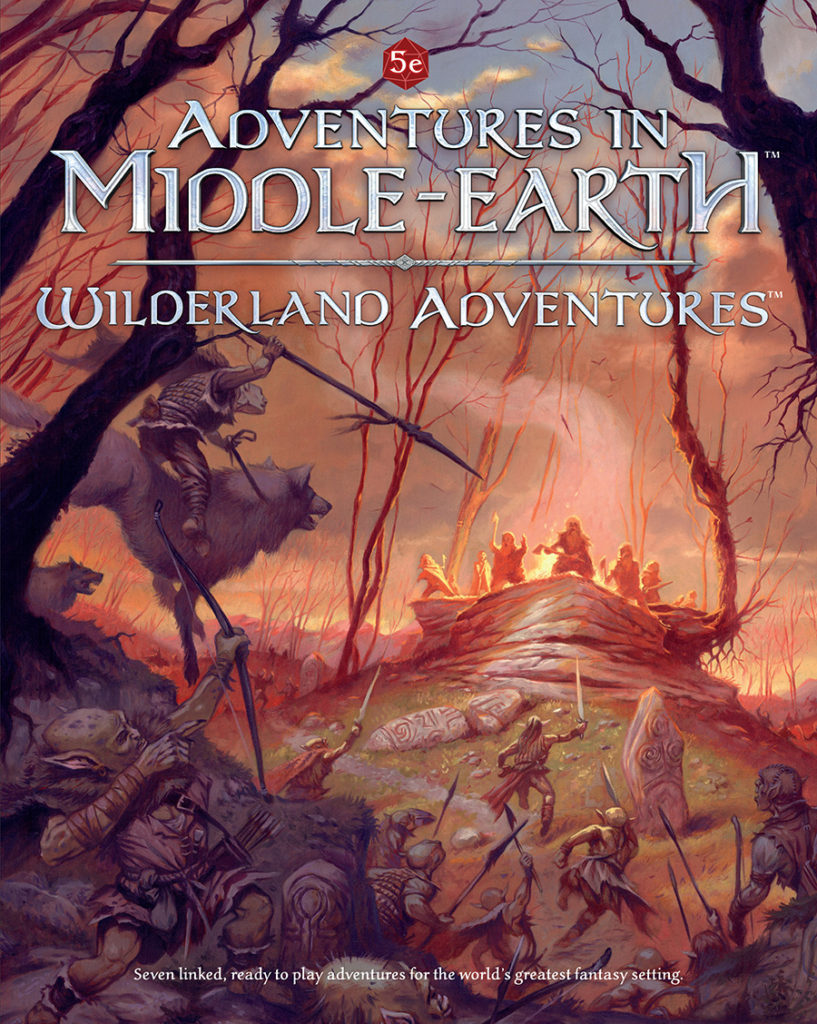
Now onto a quick report on how the first adventure played out.
*** Spoiler Alert ***
If you are going to be a player in the Wilderland Adventures (for TOR or AiME) stop reading here.
********************
The party consisted of a Dwarf warrior, a Dwarf rogue, a Wood Elf scholar, and a Dunedain warden (similar to a bard but more combat oriented and not at all responsible for opening cell doors).
I rather clumsily started the adventure with the party wandering the edge of the Long Lake near the ruins of the original Lake Town discussing what to do when the passes over the mountains open. Out of nowhere a shout rings out. The pretty Dunedain warden was too busy thinking of how impressive he was to notice. He failed 7 perception rolls over the course of the night, always by a large margin, most of them with a critical failure. I ended up changing his heirloom to a mirror as he clearly was admiring himself and not his surroundings!
The others were more aware and all ran to help the boy who was screaming that his father was being attacked by his own guards. Covering the ground quickly, they saw the merchant in the trees with his back to a tree holding a branch in his hand while 3 thugs threatened him.
The treasure hunter ducked into the bushes as the warden shot to lightly wound. He messed up and did real injury. The thugs then tried to bribe the party to look the other way as they took care of the merchant, but the boy cried out and was restrained by the elf. The warrior charged, figuring that being asked to turn the other way while a murder happened was not on. He swung hard but missed, as did the treasure hunter (despite advantage) who got a thump on his head for his trouble. The warrior’s armour took a blow and the warrior then hit the leader. Not expecting this much violence, the thugs gave up and were detained by the party. After properly introducing themselves to the merchant Baldor and his son Belgo, they all agreed to return to the new Lake Town, restock (and heal up) and turn the the three reprobates over to the bailiff before escorting Baldor through the Mirkwood. The three thugs were known to have supported the old Master of Lake Town, and now that he disappeared, they’ve taken to odd jobs so the bailiff was unsurprised to see them.
I’ll note here that the party had really think to adapt from a traditional D&D murder-hobo style for that first encounter. Seeing the thugs threatening a man they had to consciously hold back from immediately killing but the cost from shadow (corruption) mechanic and the benefits character builds reinforced good behaviour.
After returning to the path, the party, now escorting the thankful Baldor, his son, and his ponies across Mirkwood, met up with some Woodland Elves who had earlier arranged to meet Baldor and buy some goods. Rafting into the Woodland Realm they got to try audience rules and wisely had the elf and Dunedain speak up as Dwarves were no help, especially the socially impaired treasure-hunter.
After a nice meal and a good rest they got on the main trail and went into the fastness of the Mirkwood, being careful to remain on the path. I explained the journey rules and the roles the party had to play and the possible outcomes. The journey rules have each member of the party assume a role. The guide has to roll for how the journey starts, and then random journey events will test the skillsets of the all of the members (scout, hunter, lookout). All of these rolls influence outlook, giving shadow points or exhaustion or bonuses depending on how the journey went. This really reinforces the idea that journeying to a ruin is not a simple undertaking but must be planned carefully. That same journey though, becomes an adventure in and of itself, which I really like.
The departure roll in this case didn’t go with the party getting depressed wandering in the dark, dank wood, gaining a shadow point each. That evening, the first event had the party surprised by King Thranduil and his guards. The King was actually most impressed by the grumpy treasure hunter, who had a short discourse with the royal party about the King’s hunt for the White Hart. The King then advised the party to prepare to sacrifice a pony if one of the greater spiders attacked and rode off into the darkness.
Rather overwhelmed by the encounter, Baldor and Belgo went to get a drink from a nearby stream. Belgo started to scream and Baldor ran off into darkness The party stood to immediately. Belgor was beside himself, saying that his dad drank the water and didn’t recognize him and was shouting about the dragon fire and his wife (who died during the burning of Lake Town 5 years ago). Leaving the 2 dwarves to console the child and guard the camp, the Elf and Dunedain tracked Baldor up the stream to an old ruin.
Note, the published adventure has Baldor go mad in front of the party but leaves the party unable to restrain him. In order to maintain agency, I had the madness happen “off screen”. I made other minor adjustments to the adventure to set the ground work for future aspects of the campaign and to clean up some poorly disguised railroading.
There, suspended in a web was Baldor, but also a giant eagle. The elf climbed up the webbing and freed Baldor, but the webbing began to quiver. The group rushed to free the eagle and convinced it to take the confused merchant back to the party. The two heroes booked it back towards the camp.
Back at the camp, the eagle flew off immediately and soon after a large spider approached. The fire was built up and as the spider came out, it was warded off by some flaming brands. As the party reunited more spiders appeared, with 3 pressing the attack. These spiders were tough, and potentially deadly, but the party did well and killed all 3 while taking only a few wounds. The group then set alight some of the webbing in the woods and ran down the path, hoping to put as much distance between themselves and the spiders as possible.
As they ran rain began to fall and it became miserable out in the dark. Though Baldor began to regain some of his memory his son was still upset, but had taken a shine to the gruff treasure hunter. The cold rain and wind were going making the going hard and the Dwarves wanted to get the humans into someplace dry quickly. Luckily the party spotted a bit of smoke rising from what seemed to be a hollow tree. Being very mindful of social niceties, the group didn’t wait in the tree for its owner after searching inside, but rather outside to ask permission. In short order a stinky hermit showed up and, after being given some food, calmed down invited the party to stay in shelter as the storm passed. The party did extraordinarily well due to their social acumen and that really reinforced playing a respectful adventurer.
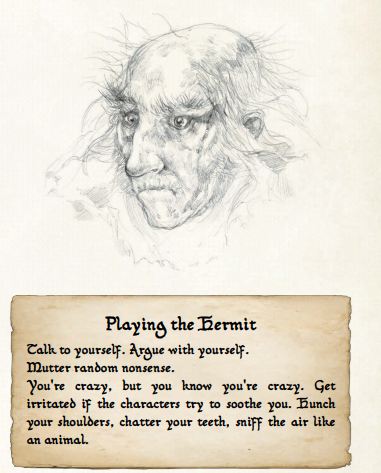
Feeling refreshed the party began to head out, the day was nice and getting warmer, and there was even a bit of sunlight filtering through the trees. Up ahead a large clearing looked like a good place to rest, and in the middle was an old stone well. The warrior was very interested in it as the others flopped down to enjoy the Spring sun. But the Mirkwood is full of deceit and tentacles came out of the well and attacked the warrior as he investigated, trying to pull him in. The party responded quickly and did a great amount of damage to the thing in the well in just 2 short rounds and it withdrew, leaving some mangled tentacles behind.
The clearing began to look menacing so the party moved on quickly. In a few more days the party was almost at the Forest Gate. Just before they got out the final journey event had them run into some goblins. The party surprised the goblins and quickly took them out. 2 ran for it and the treasure hunter chased them, stepping off the path. The Dunedain followed and soon both were lost under the eaves of the Mirkwood. They had wounded 1 of the goblins with a called shot (and killed the other) so captured it. They bargained with the goblin to have it lead them back to the path in exchange for freedom. The goblin agreed and soon the party was reunited.
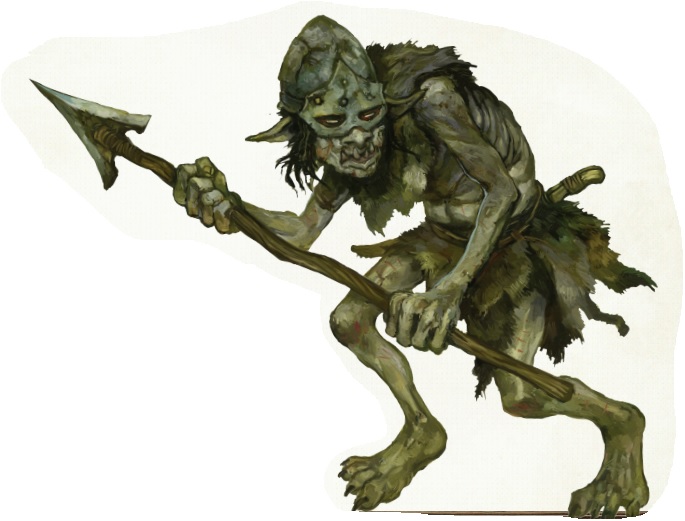
The treasure hunter bent over as the goblin turned to the Dunedain to receive its freedom. The burglar cut the goblin’s ankles from behind, crippling it. The goblin shouted that they had promised to let it go as it fell on the ground. The treasure hunter (who detests goblins even more than most Dwarves) said the goblin was free to go and should be thankful. As the noise grew the warrior stepped in and put the goblin out of its misery before spiders came to eat them all. The treasure hunter earned more shadow points for that, and the rest of the party was actually uncomfortable with his actions, which speaks to the ruleset. In 3 hours the group had bought into the Middle Earth mindset, which is great and speaks to the well designed system.
The Forest Gate and the end of journey was next, with the party ending the journey on a high note, gaining advantage on social interaction checks. They then headed down to the Most Easterly Inn, from where they will start their next adventure. It was a good session, despite some rough descriptions on my part, and I think everyone enjoyed the setting that they knew. The adventure itself was easy to run with minimal prep. While there were some problems, the Wilderland Adventures are overall very well done and I shall continue to use them.
AiME is a great version of 5e, and I am definitely planning on using it as the basis for the ruleset for my homebrew world in a year or so. If you play 5e, or Pathfinder or any OSR clone, I highly recommend you check out AiME as it has great ideas for even high fantasy realms. The books are high quality but are expensive. If you buy from Cubicle 7 you get the pdfs and the hard copy. If you are concerned about cost, the pdfs are more reasonable, and both the Adventurer’s and the Loremaster’s Guide are worth it.
